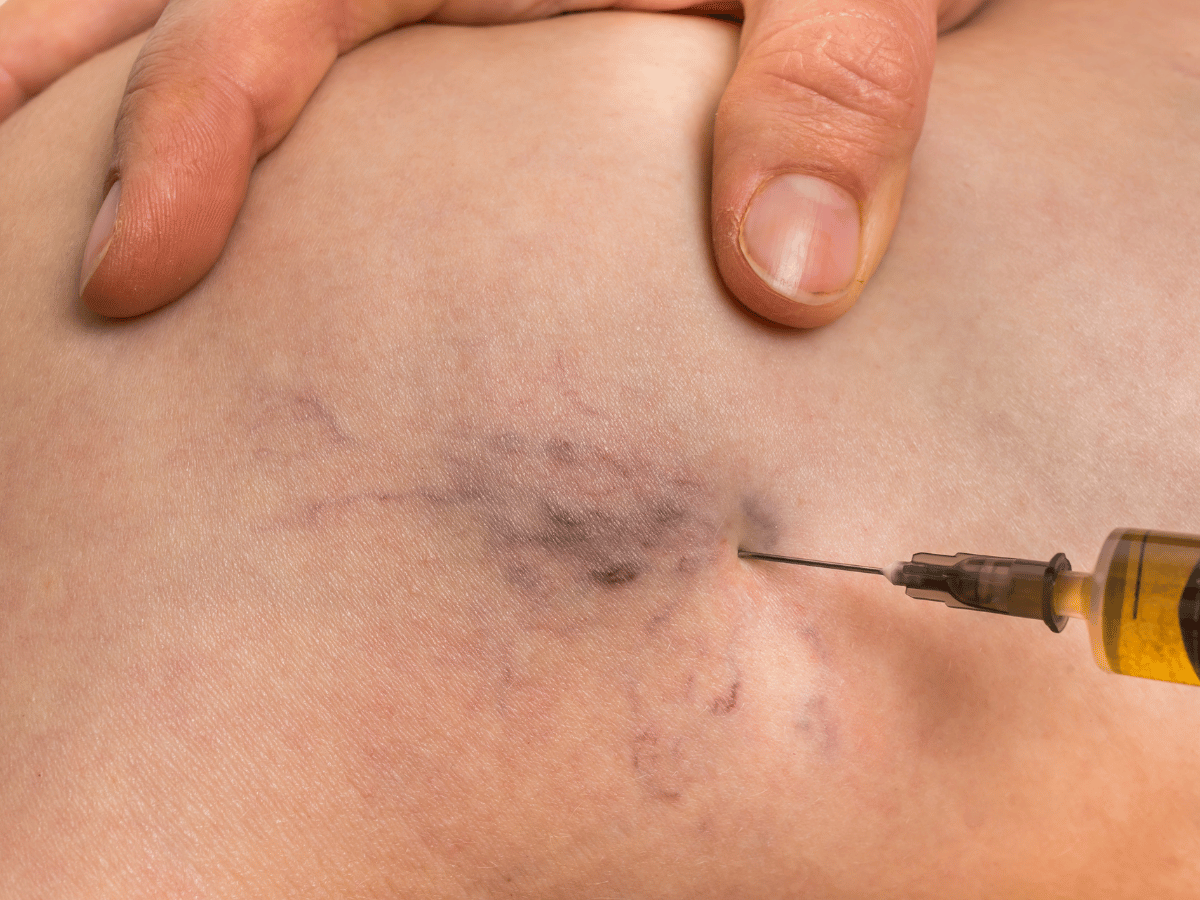
Spider veins decorating the legs or small bluish reticular veins may seem harmless, but they often come with tired, heavy, or restless legs, especially after a long day on your feet. Fortunately, venous sclerotherapy allows us to treat these veins simply, effectively, and without surgery.
Venous sclerotherapy is a minimally invasive outpatient procedure designed to treat small to medium-sized abnormal veins. Whether we’re addressing spider veins for cosmetic reasons or targeting underlying venous insufficiency, this technique has played a transformative role in modern vein care.
Sclerotherapy works by injecting a solution, known as a sclerosing agent, directly into the target vein. This causes the vein wall to become irritated and inflamed, leading it to collapse. Over time, the collapsed vein is naturally reabsorbed by the body, and blood reroutes through healthier nearby vessels.
This mechanism may sound straightforward, but it’s grounded in decades of vascular science. Key to its success is the damage done intentionally to the endothelial lining of the vein. This stimulates fibrosis, which seals the vein shut permanently.
Sclerotherapy is most effective for:
We’ve seen great outcomes in patients dealing with symptoms like chronic leg fatigue, itching, swelling, or persistent pain. Additionally, for many individuals concerned about the visual appearance of spider veins, this treatment offers not only aesthetic enhancement but also relief from discomfort.
However, patient selection is key. Not all veins are suitable for sclerotherapy. During evaluations, including ultrasound imaging, we determine vein depth, size, and reflux to establish the best treatment route.
During your initial consultation, a vein specialist assesses your venous system, often using Doppler ultrasound to identify the veins needing treatment.
We often advise patients to avoid applying creams or lotions on the day of the appointment. Wearing loose-fitting clothes helps post-treatment comfort.
The doctor injects the sclerosing agent into the affected vein using a very fine needle. Sessions typically last 15 to 30 minutes and involve minimal discomfort. A slight itch or burn at the injection site is normal.
After the injections, we apply compression and advise movement (such as a brief walk) to promote circulation. Compression stockings are generally worn for a few days.
The three main agents we commonly use depending on vein type and location are:
Choice of agent depends on vein type, patient tolerance, and prior history. In sensitive areas like the face, Polidocanol shines for its low risk of pigmentation changes.
While patients initially seek sclerotherapy for visual improvement, clinical outcomes extend far beyond skin-deep.
Clinical studies also support its benefit as adjunct therapy for patients undergoing endovenous laser or radiofrequency treatments.
Though generally regarded as safe, sclerotherapy, like any medical procedure, carries potential risks:
Proper technique and careful patient selection make these rare. We strongly advise choosing experienced vein specialists to minimize complications.
Recovery is usually quick. Primary recommendations include:
Some veins may need a second or third treatment session for complete resolution—and that’s entirely normal.
Laser treatments are best for facial spider veins or veins less responsive to injection. Sclerotherapy, however, remains the gold standard for leg veins due to its superior effectiveness.
Surgical vein stripping is rarely needed today. Sclerotherapy offers a much less invasive option with virtually no downtime.
RFA is ideal for larger, refluxing trunk veins. It’s commonly combined with sclerotherapy for comprehensive results.
When performed with precision by a vascular specialist, venous sclerotherapy not only resolves unsightly veins—it restores comfort, confidence, and quality of life. Its quick recovery, impressive safety profile, and proven outcomes make it one of the top treatments in modern vein care.
If you’ve been living with leg discomfort or frustrating visible veins, now may be the time to explore sclerotherapy.
Get connected with the experts at SFL Medical Group to schedule your vein consultation today. Relief and renewed confidence are just an appointment away.
Sclerotherapy is a procedure where a solution is injected into problematic veins. The solution irritates the vein's lining, causing it to collapse and be absorbed by the body.
Individuals with spider veins, small varicose veins, or localized venous disease in the legs or face are ideal. Good overall health and realistic expectations are also important.
Common agents include Polidocanol, Sodium tetradecyl sulfate (STS), and Hypertonic saline. Doctor choice is based on vein size, location, and patient sensitivity.
Most patients need 1 to 3 sessions per treatment area. The number depends on vein size, extent, and your body’s response to the therapy.
Most effects are mild and temporary, bruise, redness, or pigmentation. Rarely, there’s skin ulceration, allergic reaction, or blood clot formation.
Avoid moisturizers or lotions on the treatment day. Wear comfortable clothing and follow your doctor’s specific guidelines on medication, if necessary.
Wear compression stockings, stay active with light walking, avoid hot showers or saunas, and schedule follow-ups with your vein specialist.
For small to medium leg veins, sclerotherapy is more effective than laser therapy. It's far less invasive than surgical options and typically yields faster results.
Your well-being is our top priority. Reach out today to discover how our dedicated team can support your health journey.
Have questions or want to learn more? Use the form below to get started!
Connect with South Florida’s trusted multispecialty care team and take control of your health with compassion and convenience.
©2025 South Florida Multispecialty Medical Group. All Rights Reserved.